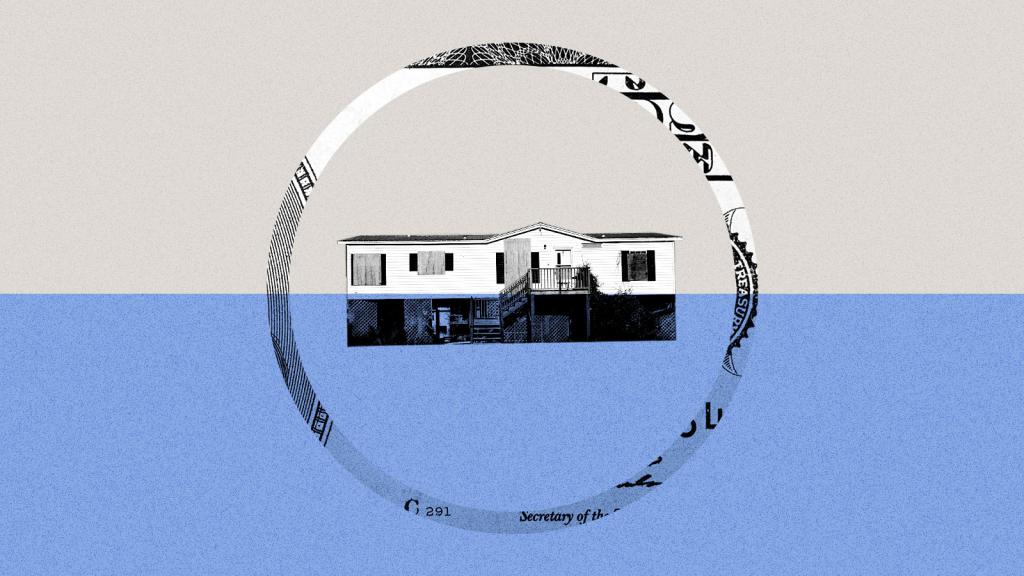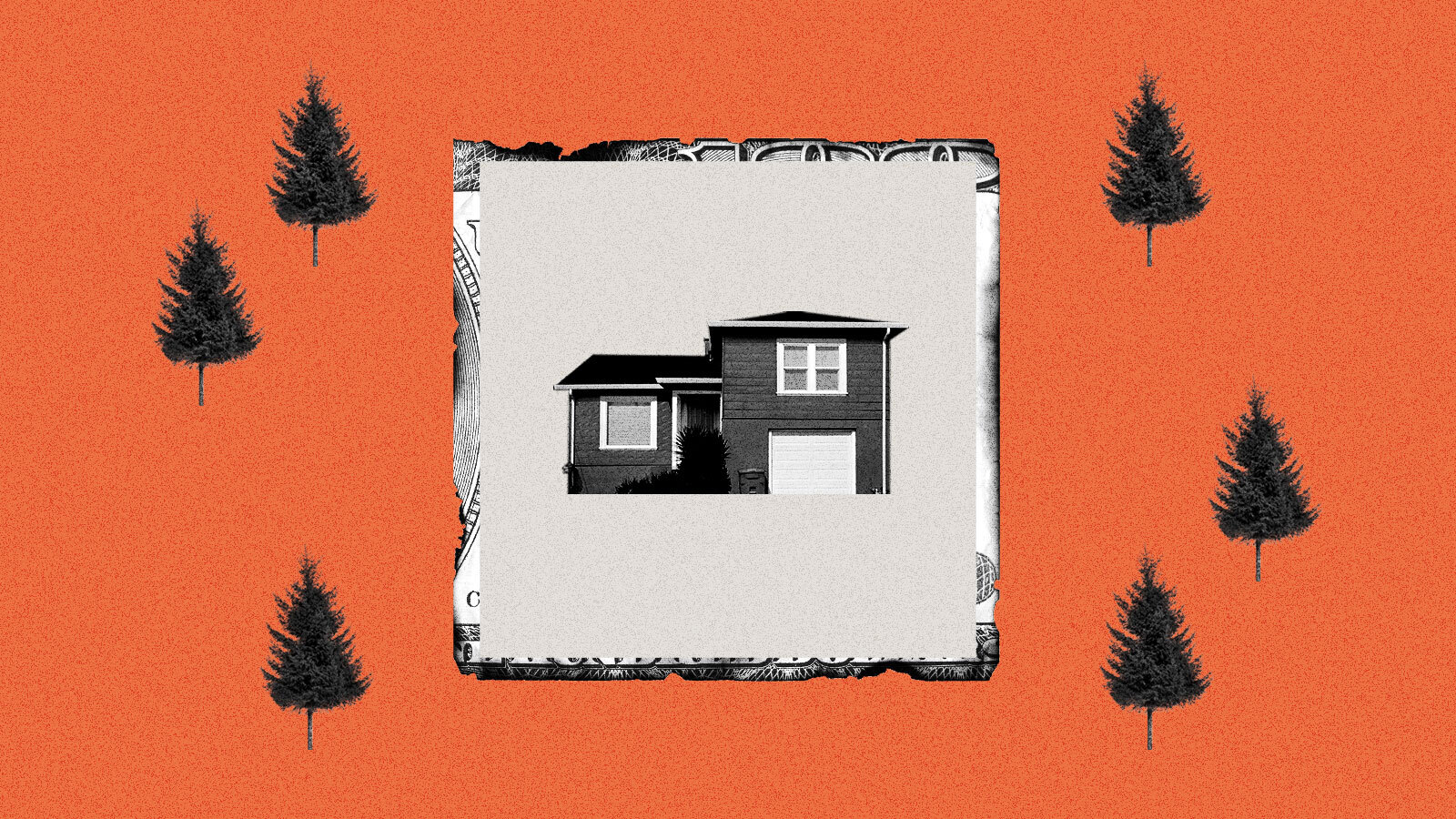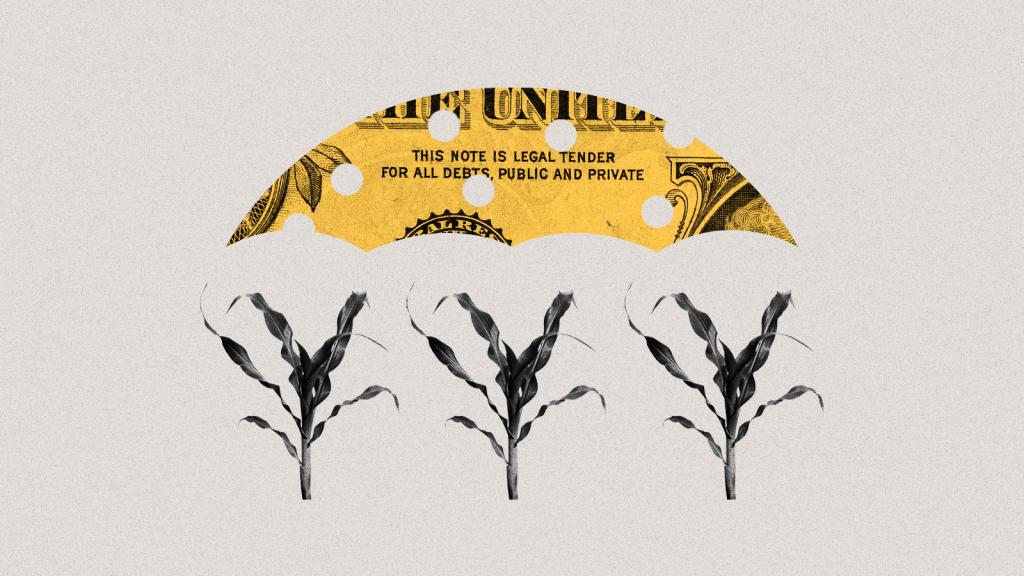This story is the third in a four-part Grist series examining how climate change is destabilizing the global insurance market. It is published in partnership with the Economic Hardship Reporting Project.
It wasn’t the first summer Justin Guay went outside and choked on smoke. Or the second. But by the time wildfire season seemed to last year-round, he decided to move his family away from California and back to Utah, where he’d grown up.
In 2020, Guay bought a house in Wasatch County near the jagged mountains, where he thought the worst climate impacts would be warmer winters with higher snow lines. An avid skier, Guay thought that was bad enough. But this spring, a letter arrived from his homeowners insurance company, brokered through Progressive. “They were dropping us because they would no longer be providing insurance — period,” he recalled.
As they scrambled to find new coverage, Guay and his wife were shocked when their first inquiry was rejected. “They said, ‘We no longer provide insurance to homes in your area.’” Other companies at least provided quotes, though they all offered rates at least double his previous policy. Returning to his home state, he hadn’t considered fires as a risk. They were never a major issue while he was growing up. Shortly after he moved back, however, 5,000 people were evacuated from a neighboring town during a large burn.
As climate risks upend the insurance market, homeowners like Guay are being caught off guard. Losing his coverage really highlighted “the limitations of your individual ability to cope or deal with these impacts,” said Guay. It’s a nationwide problem he’s now turning to at work as the director of global climate strategy for the Sunrise Project, a climate justice nonprofit.
Climate change is now the main driver of the increase in fire weather in the western United States. As conditions get warmer and drier, blazes are burning over larger areas and scorching places once thought of as low-risk. This summer, around 100 people died as flames tore through Maui in one of the deadliest wildfires in American history, leaving behind $3.2 billion in property damage. Across the Western United States, existing dangers are getting worse: Four of the five largest wildfires in California’s history have occurred since 2020. Meanwhile, close to a quarter of the Americans now at risk of catastrophic wildfires live in the eastern half of the country, in places that may not be prepared to respond.
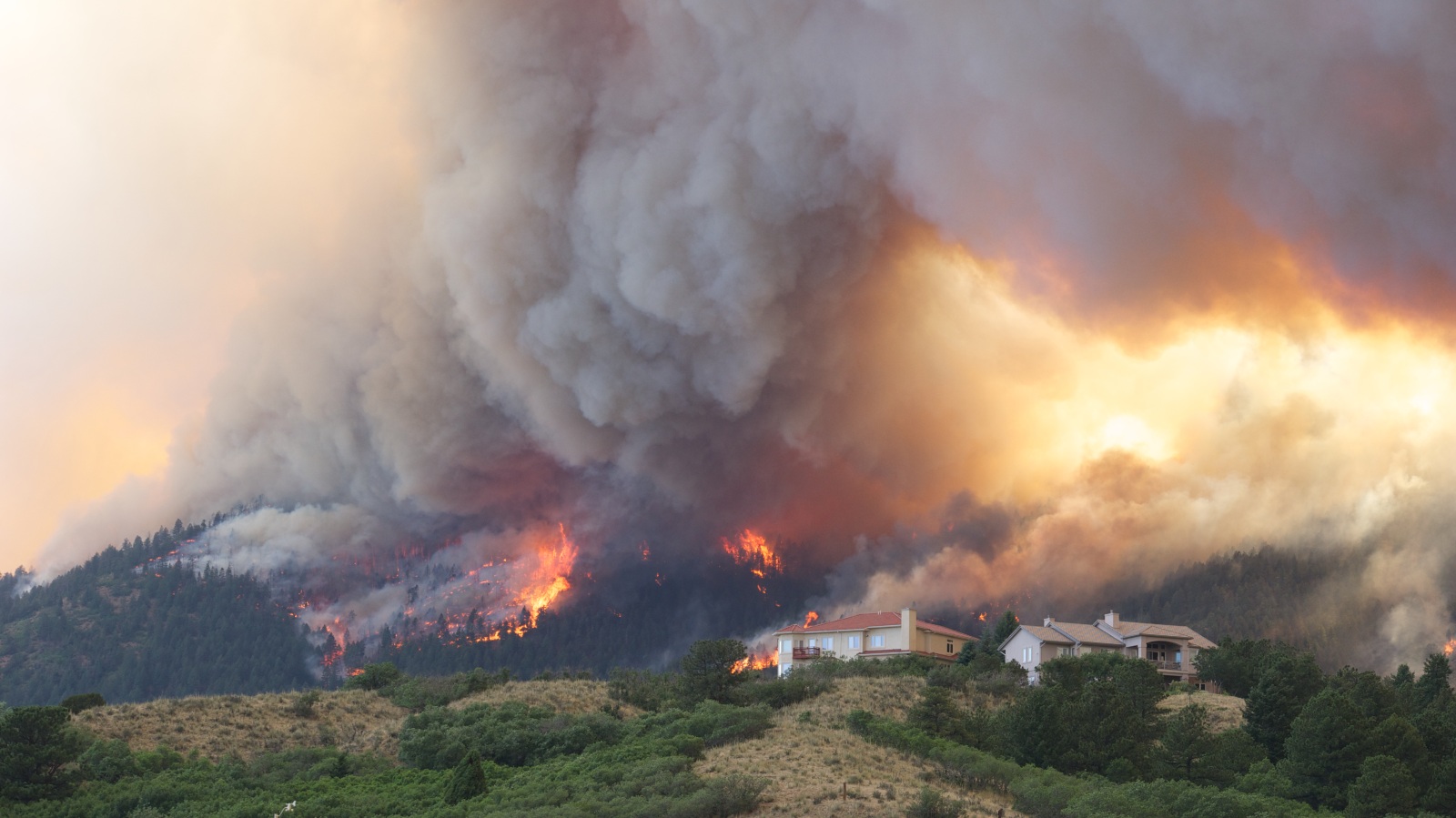
All this damage has racked up quite the bill. Nationally, wildfires caused more than $22.5 billion of losses in 2017, a record surpassed in 2018 when blazes burned through $29 billion, while 2020 and 2021 took third and fourth place in the echelon of damage. Those are just direct costs; a 2020 study found the indirect costs of 2018’s wildfires alone — things like health care costs and disruption to the broader economy — cost almost $150 billion.
Compounding all this is the boom in people moving to fire-prone places. Between 1990 and 2010, more than 25 million people relocated to areas known as the wildland-urban interface, where human development abuts wilderness. As inflation spikes the costs of rebuilding, those decisions are increasingly expensive: In the last five years, wildfires cost the United States $68.4 billion.
These losses are contributing to the destabilization of the homeowners insurance market. The insurance industry argues that attempts to control pricing — like California’s regulation that required insurers to set their rates based on damages over the past 20 years, rather than looking ahead at future hazards — have backfired. Many companies have chosen to stop selling new policies in California, while others have dropped existing policies, causing an additional 50,000 people in the state to lose their coverage just this summer.
Yet as Guay found, simply relocating wasn’t a solution. Insurance, the financial mechanism that has underpinned the global economy for the last 400 years, is no longer guaranteeing most people’s largest asset. “There’s nowhere to run,” Guay said.
In California, many residents find themselves on the leading edge of this crisis. Rural areas were the first to be affected. But now, even people in suburban areas and across a broad spectrum of society — including politicians themselves — are seeing their coverage vanish.
The problem itself is pretty simple: Nearly a quarter of Californians now live in areas at risk of catastrophic fire. Knowing what to do about it is a much thornier question.

After several close calls with nearby fires, Beth Pratt decided to refinance the mortgage on her home in Midpines, outside of Yosemite National Park, and spent $100,000 — all the equity in her home and all her savings — to reduce her risk. She installed a metal roof and built a water storage tank with a fire hose hookup. She completely sided her house in metal, replaced her decking and railings, and cleared brush. Most of these measures went far beyond the basic tree trimming that Allstate requested during her last home inspection. She will now be paying off her mortgage till she is 80. Despite her efforts, she got a letter this July canceling her policy.
In 2018, Governor Gavin Newsom announced a moratorium on homeowner policy cancellations for one year in ZIP codes near wildfires, a condition which applied to Pratt’s community after a fire in July 2022. Pratt’s cancellation arrived this summer almost exactly when that grace period ended, right in the middle of wildfire season. Last year, the state’s insurance commissioner required insurers to give discounts for the kind of steps Pratt took, but rather than adjusting her rates, Allstate chose to drop her coverage. (Allstate made a quiet decision last fall to stop writing new policies in California. State Farm followed suit this spring.) “I feel like I did everything right. But it didn’t matter,” she said.
Pratt’s mortgage requires her to have homeowners insurance, putting her at risk of eventually defaulting. She tried to find another private insurer to no avail. Eventually, she turned to the California FAIR Plan, a state-backed policy that covers people who have been denied private coverage at least three times. Its budget comes from levies on insurance companies operating in the state, but these coffers are shrinking: The FAIR Plan itself announced that it was seeking permission from the state’s Department of Insurance to hike premiums by nearly 50 percent.

Most of Pratt’s neighbors in Midpines have also lost their insurance. Some may still qualify for private policies, but can no longer afford them. “What you’re talking about in an area like mine is not rich people or second homes, but working-class people, people who have lived here their whole lives, losing the ability to insure their properties,” she said.
Nationwide, approximately one in three houses is located in the wildland-urban interface. But even documenting the hazards has been contentious: The Oregon Department of Forestry tried to issue a map in 2022 showing 80,000 homes were at risk. But homeowners worried this would decrease their property values and raise their insurance rates protested until the state rescinded it. Or take the 2018 Camp Fire, which began when a spark from an electric transmission line owned by the utility Pacific Gas & Electric blew into a firestorm near the town of Paradise. In its aftermath, insurance companies sued PG&E, reclaiming around $11 billion — or about 85 percent of their claims. The utility later declared bankruptcy.
There’s a long history of insurers going after the entities that caused expensive claims, a process known as subrogation. Empire Blue Cross and Blue Shield, for example, won $18 million in 2001 from Philip Morris and other tobacco companies to cover the medical treatment of smokers. Advocates suggest insurers could take a similar approach to the fossil fuel industry, whose product has helped worsen wildfires. Rather than individuals, or even insurers, said Peter Bosshard, the coordinator of the Insure Our Future campaign, “it should be the polluters who pay.”
Multnomah County, Oregon, took its first step in this direction in June, suing several multinational oil companies for the heat dome that smothered the region in June 2021, killing at least 69 people in the county, which includes Portland. (The death toll across the Pacific Northwest was much higher: at least 250 in the U.S. and another 400 in Canada.) In addition to $50 million in damages, the county is also seeking $50 billion for research and to implement “weatherproofing” to help handle future extreme heat.

“What we’re staring at now is a situation where everything is going to get more expensive,” said David Pomerantz, executive director of the Energy and Policy Institute. Homeowners aren’t the only ones finding they’re priced out of the insurance they need. Utility companies, for example, are also struggling to find wildfire liability coverage to protect them from lawsuits like the ones PG&E faced. That makes upgrading utility infrastructure even more important — but that ultimately costs consumers money, too. PG&E is currently improving its transmission network and asked California regulators for a $3.2 billion rate increase this year, or an average bill increase of around $450 a year. Perversely, utilities themselves primarily profit by making these kinds of capital expenditures, so “every utility in the West is doing this to some degree,” Pomerantz said.
As this system breaks down, everyone’s feeling the pressure to guess the future correctly. In most states, the industry standard has been for insurers to use catastrophe models to estimate wildfire or other disaster risk in a region over time, then use those predictions to make decisions about their overall risk, like how much reinsurance to purchase as a backstop.
Technological advances have made it possible to predict hazards not only in your part of town, but also for the exact parcel of land you call home. “We’re entering a new era where you can get at the root cause of mitigating risk, as opposed to just transferring that risk,” said Attila Toth, co-founder and CEO of start-up ZestyAI, which uses artificial intelligence to assess properties. The eight-year-old startup has collected satellite data, building permits, and two decades of historical losses to train its AI, developing a model called Z-FIRE. The company claims it can now spit out a wildfire risk score for all properties in the Lower 48, based on specific information about your home, such as what type of roof it has or what vegetation is nearby.
ZestyAI’s wildfire model has gained regulatory approval in seven states, including as part of a rate filing by the California Department of Insurance. Among the many high-profile companies now using ZestyAI’s model is Amica Insurance. After the 2017 Tubbs Fire, which destroyed 3,000 homes and killed nine people in Santa Rosa, California, Amica realized that it had mistakenly underpriced high-risk properties, leaving it on the hook for major losses in several counties. The company now uses Z-FIRE, a move Amica says “leverage[s] the power of AI to generate a clear picture of not only how likely it is that a home might be exposed to a wildfire, but also the probability of its damage.” The system has also allowed Amica to “offer coverage for homes that may have previously been declined.” Farmers Insurance says thanks to Z-FIRE’s fine-tuned analyses, it expects to add 30,000 new policies in California.

Helping both insurers and homeowners get a better sense of their actual risk is long overdue, says Roy Wright, a former director of the Federal Emergency Management Association’s insurance administration. He now leads the Insurance Institute for Business & Home Safety, a nonprofit organization that tries to “translate science into action” for insurance companies and homeowners. It conducts research to provide information on how to prevent damage during disasters. “We show people what actions make a difference,” Wright explained. The institute has spent decades testing construction design, like intentionally setting siding and roofing materials on fire in the lab to see what helps prevent embers from catching. He is working toward getting regulators to add the institute’s construction standards to states’ building codes.
Wright’s organization is now collaborating with ZestyAI to improve its models’ accuracy and to better understand new hazards. But some are leery of these kinds of proprietary datasets, saying that nontransparent pricing decisions may increase discrimination. Unless regulators step in, Madison Condon, a corporate and environmental law professor at Boston University, predicts an obvious consequence will be “huge differentiations in the cost of insurance that could have demographic effects.”
California currently has some of the most transparent policies, requiring companies to publicly disclose when they won’t renew a policy and to provide homeowners their risk assessments and an opportunity to appeal them. Washington state, in contrast, does none of the above. But the Golden State is also facing some of the highest losses: Insured claims have outpaced premiums in the state since 2016 by more than $4 billion. Insurers, like banks, have to have a certain amount of money on hand, so to sell more policies, they have to increase their capital. Many private companies turn to reinsurers for this, paying them a fee for their financing. But now that risks have increased, reinsurance prices have too: In July, reinsurers increased the cost of U.S. property reinsurance by as much as 50 percent.
Unlike most other states, California’s insurance commissioner prohibits insurers from passing on these reinsurance costs to the consumer. The goal of measures like this, according to Harvey Rosenfield, an advocate who founded the nonprofit group Consumer Watchdog, was to make insurance available and affordable. During the last insurance crisis in the 1980s, the industry claimed that higher losses and a spike in lawsuits were responsible for rising premiums, which Rosenfield alleges led to discriminatory practices in minority neighborhoods, an issue researchers have identified nationwide. To address these issues, Rosenfield wrote California’s Proposition 103, which passed in 1988. It aimed to rein in costs and increase transparency in the country’s largest market, establishing a review process for rate increases and electing a state insurance commissioner.
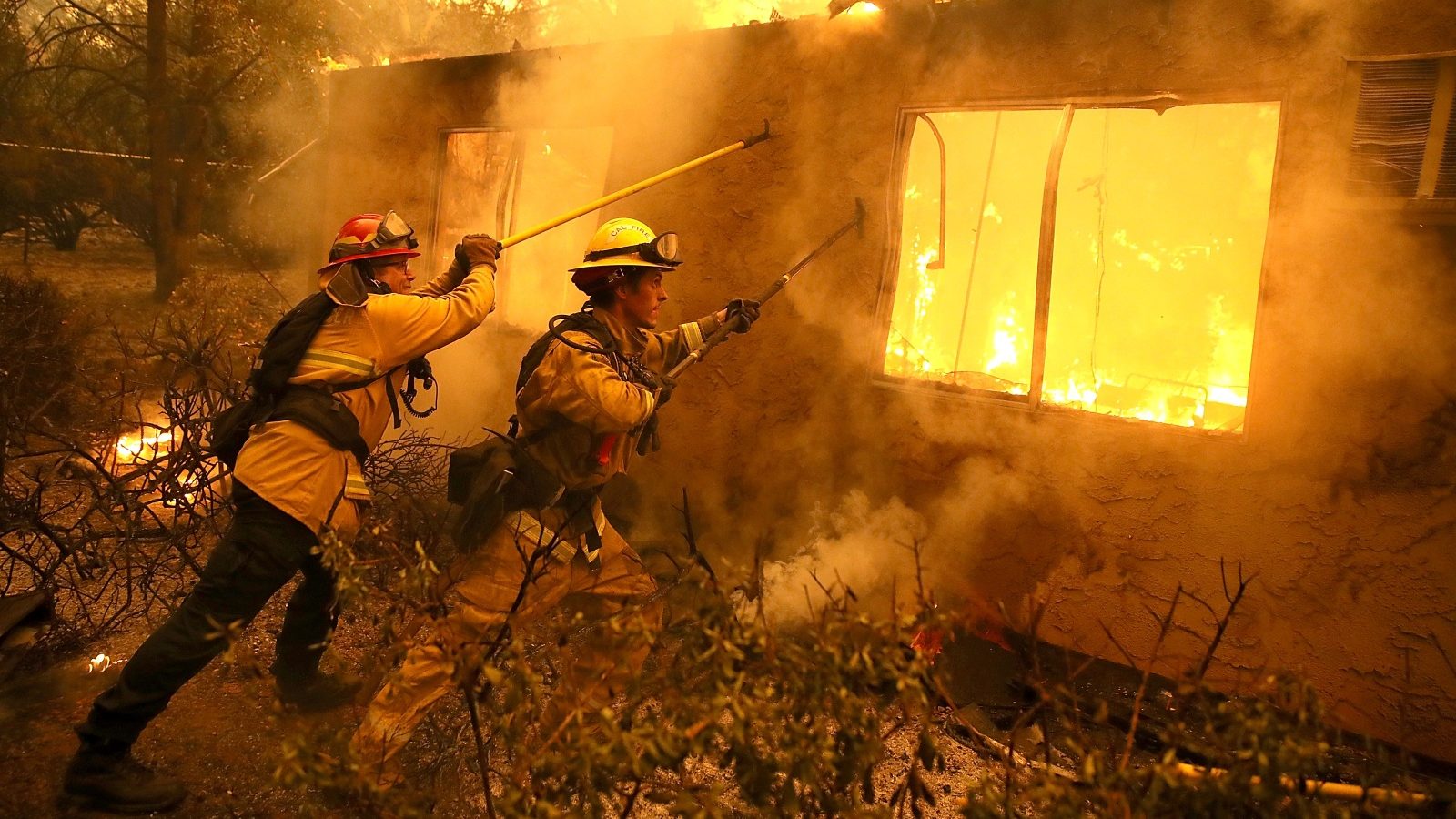
The insurance industry argues Proposition 103 keeps the market from reflecting true risk and forces companies to offer insurance at artificially low rates. Since 2009, California has seen a 335 percent jump in buildings destroyed by wildfires, along with a 270 percent increase in associated costs. But Rosenfield notes homeowners insurance companies in California earned an average annual return on net worth of 8.8 percent over the last 20 years, compared to 6.2 percent nationally.
Consumer Watchdog says what’s needed to address the lack of affordable insurance is to enforce existing laws. For example, it says its advocacy challenging consumer rate increases has saved homeowners $2.2 billion since 2002. Long-term, the organization thinks the government should be helping homeowners afford to fortify their property, as well as instituting policies that require companies to sell insurance to all owners who meet certain mitigation measures.
In early September, the president of Consumer Watchdog’s advocacy group, Jamie Court, happened to be on the same morning flight to Sacramento as an insurance lobbyist, Michael Gunning. When Gunning began bragging about his efforts to push through a multi-billion-dollar bailout for the industry through California’s state legislature at the end of its session, Court started recording their conversation. “We are trying to jam a bill in the last three weeks,” Gunning can be heard saying.
The bill, which would have absolved companies of responsibility for covering fire claims under the state’s FAIR plan, failed to pass. But several weeks later, California’s insurance commissioner, Ricardo Lara, announced he would expedite changes to allow companies to use catastrophe modeling and artificial intelligence to take into account projected impacts of climate change in their pricing. He also signaled he would “explore” allowing companies to pass on reinsurance costs. In exchange, insurers will be required to write at least 85 percent of their market share in “distressed areas,” although those have not yet been identified. Governor Newsom supported the changes, immediately issuing an executive order authorizing the Commissioner’s “emergency regulatory action” to bolster the faltering industry.
Consumer Watchdog says these changes could increase premiums by as much as 50 percent overnight. “Insurers are leveraging a real climate crisis with a false crisis of affordability in order to line their pockets,” said Carmen Balber, executive director at Consumer Watchdog. “If trends continue, and insurers are allowed to continue making those choices on their own, we could be seeing a much more serious crisis for homeowners.”
When these cascading effects hit, it’s going to cost those who can least afford it the most. While insurance is ultimately about managing risk for a single business or person, the escalating nature of the climate crisis can only be addressed by action society-wide. Homeowners insurance is increasingly at the crux of this mismatch: Buying a home is one of the biggest financial decisions in someone’s life, and it’s a long-term investment. But even if you can get — and afford to pay — for insurance when you buy a house, companies reevaluate their policies and premiums every year. “It’s not like we need more information,” Condon said. “We need better ways to think about how to adapt in the face of uncertainty.”
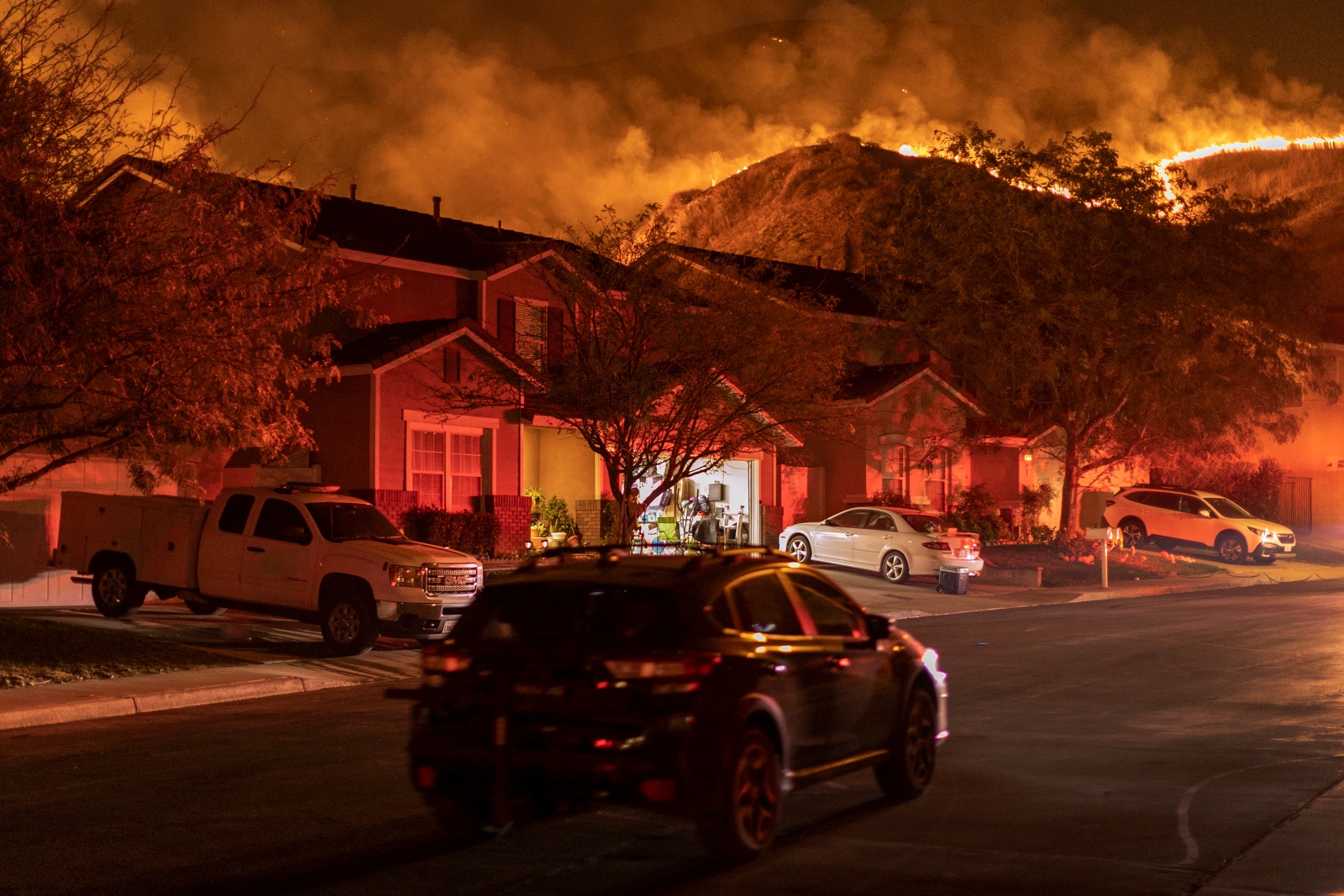
As the stakes rise, the house seems to always win. “I looked up the revenues of some of these big insurance companies,” Pratt says. Their profits might be declining — after making 32 cents on the dollar in 2023, Allstate’s credit dropped for a second time in 2023, to BBB+, a middling rung on S&P’s rating scale — but it’s still “a lot more than I make,” she said. She paid into a policy with Allstate for 32 years, but never made a claim. “What’s fair about that?” she asked.
Last winter, Pratt’s property was without power for a week, and she stayed warm hauling wood for her stove in a sled over record snowfall. Last summer, she was sweating in an extreme heat wave, watching a woodpecker gasp for breath at her bird bath. She watched, helpless, as a fire burned 127 homes nearby.
“We are learning to adapt to what it’s going to take to live in this time of climate extremes,” Pratt said, noting that while she ultimately found a California FAIR plan, it doubled her cost. “Rethinking the insurance industry — in this new regime of climate disruption — is going to be needed.”
